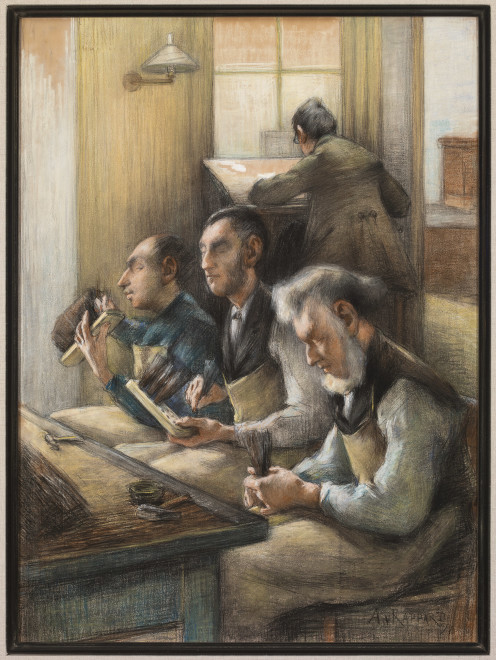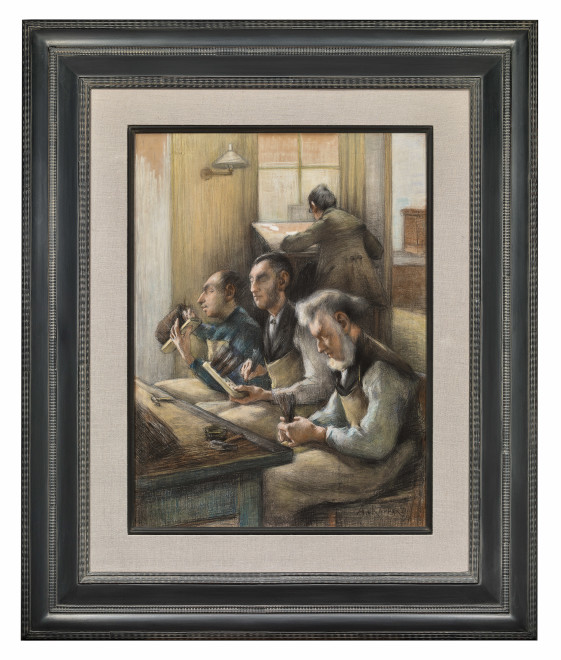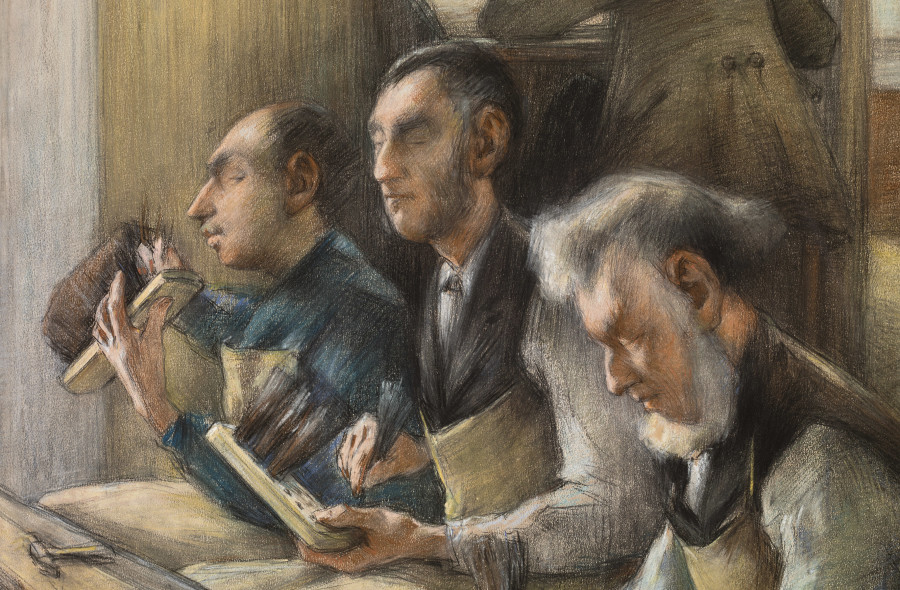Clearly, von Rappard never reached the level of achievement or notoriety of Vincent van Gogh, however the two artists became friends (a rare phenomenon for Van Gogh, who made very few, if any friendships during his lifetime) and confidants, often painting side by side. The relationship between the two artists was explored in great detail in a thematic exhibition at the Vincent van Gogh Museum in Amsterdam in 1974, Anthon van Rappard: Companion and Correspondant of Vincent van Gogh, his Life & all his Works.
Provenance
De Finspong, Institute for the Blind, Zeist, Holland
Kunsthandel “St. Lucas”, Utrecht
Private collection, Utrecht
Thence by descent
Exhibited
Amsterdam, Arti et Amicitiae, April 2 - 30, 1891, no. 82 (as Blind brush makers in a workstation for the blind. Chalk and pastel drawing)
Amsterdam, Vincent van Gogh Museum, Anthon van Rappard, companion & correspondent of Vincent van Gogh: His Life and Works, 1974, exh. cat. pp. 105-107, no. 178, illustrated
Literature
D. v.d. K. Jr., “De tentoonstelling van de teekeningen door leden van de Maatschappij Arti et Amicitiae, deel II.,” Het Nieuws van den Dag, April 20, 1891, p. 4
J. Meerdink, “Een Zeister vriend van Vincent van Gogh. De schilder Anthon van Rappard,” Bulletin ter Bevordering van de Kennis van de Geschiedenis van Zeist, vol. 20, 1990, p. 41
Petra ten-Doesschate Chu, “Anthon van Rappard, Three Brushmakers and a Bookkeeper in the Institute for the Blind in Utrecht, 1891,” Nineteenth-Century Art Worldwide 21, no. 3 (Autumn 2022)
Catalogue note
Most discussions of the Dutch artist, Anthon van Rappard focus on his complex friendship with Vincent van Gogh. Between 1881-1885, the two artists travelled together in Holland and often worked side by side. They were both at the early stage of their careers, and their friendship formed through the shared dynamics of their craft as well as the frustrations of failure; neither had been able to sell their work. Van Gogh mentioned van Rappard in 53 letters, mainly written to his brother Theo, and at one point stated that he “got on best of all with Rappard.”(Jaap W. Brouwer, Jan Laurens Siesling and Jacques Vis, Anthon van Rappard: Companion and Correspondant of Vincent van Gogh, his Life & all his Works, Amsterdam, 1974, p. 37). What becomes apparent when looking at van Rappard’s work is how similar it is to van Gogh’s early Nuenen period paintings, especially in their shared interest in depicting Realist subject matter. “They stood side by side in their commitment to the painting of peasants and workers in the tradition of Millet, Breton and Herkomer.” (op cit, p. 39).
In fact, there is no question that van Rappard’s most memorable images were his realist subjects; he depicted factory workers, laborers, inhabitants of poor houses and he had a special interest in portraying the blind patients at Utrecht’s Institute for the Blind. In a series of paintings and drawings from 1881 and a second group in 1891, he keenly observed the Institute’s blind knitters, basket weavers and brush makers showing them absorbed in their daily tasks. These carefully observed workers, with their robotic movements are the most moving works of van Rappard’s career; he shows great empathy to their lot in life by characterizing them with dignity and individuality.
Our pastel dates to the second series of the Utrecht Institute in 1891, and shows three blind workers making brushes, almost like an assembly line in a factory. Van Rappard carefully studied the individual characteristics and facial features of his three subjects; he made several preparatory drawings for each worker (Rijksmuseum print room, Amsterdam, inventory numbers, 11.21-27), and also a large-scale oil painting (Private Collection). He has clearly mastered drawing and the pastel medium, and the subdued palette of pale blues and cream colors lends to the overall calm of the scene depicted.






